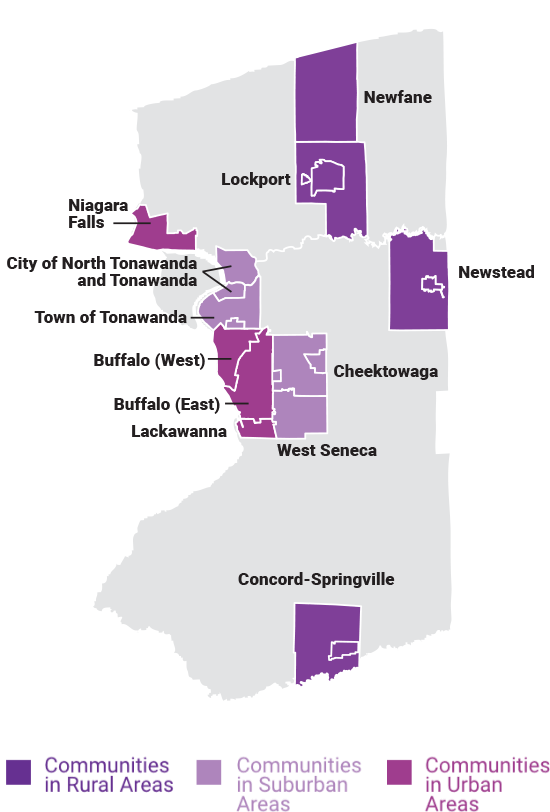Different communities have different needs
12 communities across Buffalo Niagara were selected for in-depth study. These communities represent a mix of urban, suburban and rural communities in Erie and Niagara Counties where poverty was concentrated and/or growing as a result of the Great Recession that began in 2008. These 12 communities capture over half of the total population in poverty across the region. They are intended to be representative of the challenges and opportunities facing other distressed communities in the region where opportunity barriers exist.
What the data says about these communities
Through data the research explores people in need: how many are in poverty, how this number has changed over time, the distribution of poverty across the community, and how poverty rates vary by population segment and households. Factors that contribute to economic opportunity are also explored: educational attainment, the presence of large employers, the availability of higher-paying jobs, affordable housing, transportation for connecting people with jobs and services, and neighborhood safety.
What providers and residents are most concerned about in their community
Insights from residents and providers in the 12 communities explore urgent household needs, barriers that residents face to program services and jobs, gaps in services, and opportunities in these communities.

